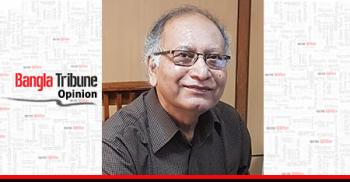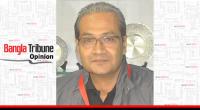 The concern with inequality has emerged strongly as an issue in Bangladesh; and such inequalities are not merely about disparities of outcomes; it is also about disparities in opportunities in terms of age, sex, disability, race, ethnicity, origin, or economic or other status. Furthermore, in Bangladesh where disparities in opportunities are so evident in every sphere of life, focus only on economic inequalities provides a partial picture of the status and policy agendas of inequality.
The concern with inequality has emerged strongly as an issue in Bangladesh; and such inequalities are not merely about disparities of outcomes; it is also about disparities in opportunities in terms of age, sex, disability, race, ethnicity, origin, or economic or other status. Furthermore, in Bangladesh where disparities in opportunities are so evident in every sphere of life, focus only on economic inequalities provides a partial picture of the status and policy agendas of inequality.
In Bangladesh, structural inequality is also an important issue; which is a condition where one category of people is attributed an unequal status in relation to other categories. This is perpetuated and reinforced by a confluence of unequal relations in roles, functions, decisions, rights, and opportunities. Structural inequality refers specifically to inequalities that are systemically rooted in the normal operations of dominant social institutions, and can be divided into categories like healthcare, employment and educational discrimination. Combating structural inequality requires broad, policy based structural change and is often a critical component of poverty/inequality reduction agenda. In many ways, a well-organised democratic government that can effectively combine growth with redistributive policies stands the best chance of combating structural inequality.
Rising inequalities have always been considered as a major policy issue in Bangladesh. Is income inequality rising in Bangladesh? The Gini coefficient of income distribution stands at 0.483 nationally in 2016; which is 0.498 in rural areas and 0.454 in urban areas. Over the period of 1964 to 2016, national Gini has risen from 0.36 to 0.483—an increase by more than 34 percent—while rural Gini increased by nearly 38 percent and urban Gini by 21 percent over the same period. These figures suggest that Bangladesh has experienced increases in Gini coefficient over the last half century; but the rate has accelerated especially since the 1990s. Further, inequality increased rather sharply in the rural areas while urban areas experienced a somewhat moderate rise in income inequality.
There is a growing consensus that the best indicator for looking at the worst form of income inequality is the Palma ratio, which effectively focuses on extremes of inequality—the ratio of incomes at the very top to those at the bottom. The Palma ratio is the ratio of the richest 10 percent of the population’s share of gross national income (GNI), divided by the poorest 40 percent of the population’s share and considered to be a more policy-relevant indicator than the Gini, especially when it comes to poverty reduction.
In Bangladesh, it is changes in these extremes that are most noticeable; while the share of income in the middle is relatively stable. The Palma ratio at the national level has consistently increased from 1.68 in 1964 to 2.93 in 2016; in urban areas, it rose from 2.00 to 2.96 while, in rural areas, it grew from 1.38 to 2.51 over the same period. The poorest 40 percent have consistently lost in terms of income share while the richest 10 percent have gained. The policy implication is that Bangladesh should focus on ‘extreme’ inequalities, that is, inequalities that do most harm to inclusive and sustainable economic growth and undermine social and political stability.
In the case of income, one of the targets of SDG10 is to progressively achieve and sustain income growth of the bottom 40 percent of the population at a rate higher than the national average by 2030. The HIES data show that the average per capita household income (at 2010 prices) over the 1986-2016 period grew at 1.43 percent while the same for the bottom 40 percent grew by only 0.28 percent. The situation is worse in the rural areas as, while the average per capita income grew by a healthy 4.41 percent, the income of the bottom 40 percent actually declined by 0.24 percent. Per capita income of the bottom 40 percent (both nationally and in the rural areas) started showing positive growth only since 2005. Along with income, one can observe growing geographical, gender-based and group-based inequalities in the country.
Overall, humanity remains deeply divided in Bangladesh. The country’s population lives in a society that is more unequal today than after independence. The income gap has deepened — and, with it, the difference in quality of life between the rich and the poor — despite the immense progress made through impressive growth performance. Economic progress has not alleviated disparities, rather has exacerbated them. Overall, the Bangladesh society is more unequal today than at any point in time after independence!
Recent research shows that how the rise of inequality, often to an extreme level, has become a worldwide phenomenon. In many countries, the ‘super-rich’ has significantly neutralised the countervailing power of the state. In many developing countries, the state power itself has been used to institute a system of surplus extraction that has been the major contributor to polarisation of the distribution of income. In either case, the containment of inequality requires a basic change in the exercise of state power. But one must also realise that it is hard for state power to give up this role which has become its raison d’etre in many countries. However, if a fundamental change in the predatory use of state power cannot be brought about, no major change in the trajectory of inequality is likely to take place.
Designing the right policy framework for addressing inequalities is the biggest challenging area to work in Bangladesh, like in other developing countries. Inequalities of outcomes and opportunities are highly inter-dependent. Without equal opportunities, systemic patterns of discrimination and exclusion prevent the poor and disadvantaged groups from accessing economic, political and social resources, resulting in inequality traps — and the persistence of inequality across generations. Equal opportunities can level the playing field so that the circumstances of birth (such as race, gender, rural or urban location) do not adversely influence an individual’s chances to get ahead in life.
Since inequality of outcomes and that of opportunities are interlinked and mutually reinforcing, a comprehensive policy framework to reduce inequality needs to address both. The mix of policies and how they should be sequenced to address inequalities are context-dependent and specific to the needs and requirements of each country or specific society and locality. Nevertheless, priority should be given to deeper and more persistent gaps. For example, Bangladesh is going through rapid urbanisation and experiencing lower increases in income inequality in urban than in rural areas, but widening gaps in quality education or health need to be prioritised.
The comprehensive policy framework to help policy makers better navigate the complexities and challenges of forming appropriate policies to address inequality should be based on three pillars: (i) moderating income inequality; (ii) closing gaps in health, nutrition and education; and (iii) addressing social exclusion by promoting agency, developing rule-based institutions, combating discrimination and transforming inequality-reproducing cultural norms.
At present, we have reached a tipping point. Inequality can no longer be treated as an afterthought. We need to focus more on how the benefits of growth are to be more equally distributed; and with right policies there doesn’t have to be a trade-off between growth and equality. On the contrary, opening up of greater opportunities for the poor and disadvantaged will spur stronger socioeconomic performance and improve living standards for all excluding none.
In this context, local authorities (e.g. Union Parishads), NGO-MFIs and civil society organisations can jointly set up ‘Susama Samaj Committees (SSCs)’ (Fair Society Committees) at the local level. These SSCs will consider evidence and make recommendations for tackling inequality and poverty at the respective local levels. These may also recommend approaches which could lead to greatest progress in addressing inequality and poverty given the local contexts, and analyse the implications for policy and practice. Location-based community-led actions on issues such as fair wages, use of local productive resources, income opportunities, education, primary health, childcare and nutrition, water supply and sanitation, and related aspects can lead to significant achievements in reducing inequalities at the local level. But inequality reducing policies such as living wages, quality education, health care services, nutritional interventions, free school meals and similar other interventions will have greatest impact if introduced at the national level.
Executive Director, Institute for Inclusive Finance and Development (InM)
Email: [email protected]


